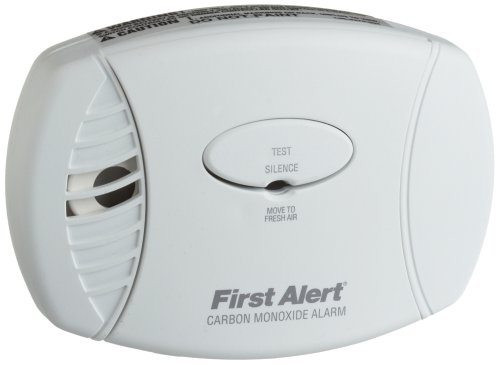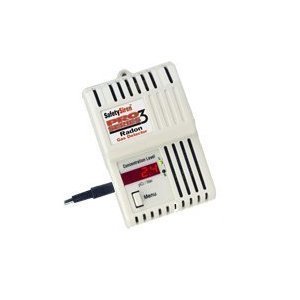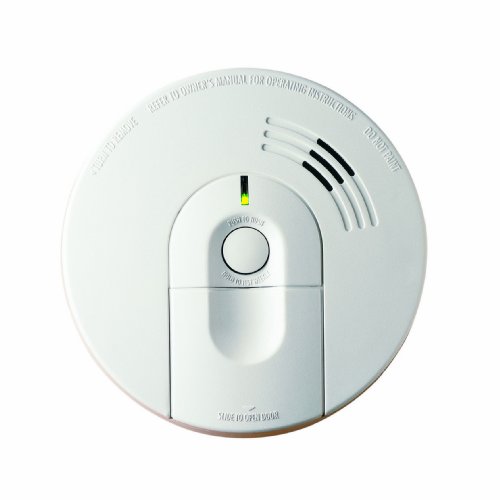
Empowers You to Save Hundreds on Electric Bills Electricity bills are rising. Now you can cut down on costs and find out what appliances are actually worth keeping plugged in. Simply connect these appliances to the Kill A Watt, and it will assess how efficient they really are. The large LCD display counts consumption by the kilowatt-hour, the same as your local utility. You can calculate your electrical expenses by the day, week, month, even an entire year. Also check the quality of your power b
P3 International P4400 Kill A Watt Electricity Usage Monitor




















Fascinating gadget,
I absolutely love this thing.
Having recently moved out on my own, and generally just enjoying statistics in general, I bought this to monitor my electric costs after two high electric bills in a row. The various results I found were quite surprising.
My air purifier, which I bought here on Amazon, uses 85 watts all the time… 85 * 24 hrs * 30 days / 1000 watts = 61.2kWhr * $0.20 = $12.24 a month.
Well, that’s quite a costly monthly addition I never thought of. And that’s just the begining.
My Vornado fan uses 45w… my air conditioner, on high 6 (out of 12) spikes up to 1200 watts. Jeez.
My computer, at idle with external drives, uses about 250w. When doing extremely intensive things, like encoding a video, 310w.
My light behind my computer desk, with five, 10-watt bulbs, doesn’t actually use 50-watts total. No, it uses 50-watts for the bulbs, PLUS 30-watts apparently just for the light unit to function.
You too will find out all these things you never knew, and possibly save money by cutting out, or replacing energy guzzlers.
The product is also made in China. Just like everything else now.
Was this review helpful to you?

|Excellent Product!,
I absolutely love this product, it’s one of the best devices I’ve aquired in a long time. When I purchased it a few years ago, I paid close to $50, but it was worth every penny. Some of my joy from using the device simply comes from the fact that I’m curious how much energy the products in my home use (I now know, for instance, that my cable box uses 15W of energy whether it is on or off, at that it wastes a little more than 10 kilowatt hours each month, or that my fridge uses 350W when on, or that my laptop only uses 40W – a useful fact to know when I went to buy an inverter to use it in my car), but it can also be used to save energy (I found that hitting the switch on the surge supressors of my computers at night can save me almost $5 a month off my electric bill). Additionally, it’s interesting to find out where all the power you use goes, and even what members of the family use the most electricity (you could do a side by side comparason of a child’s computer with yours).
Even though I’ve had my Kill-A-Watt for years, I still take it out regularly to test any new equipment in my home. I know my cell phone charger uses 4 W, my regular battery charger 5 W, and my IC3 15 minute battery charger 73 W.
Surely most will not have as much fun with this unit as I do, but it can be both practical and enjoyable for people such as myself or those looking to save some money off their electric bill. It’s also an asset for anyone off-grid, who is generating their power with solar energy or by other renewable means.
Was this review helpful to you?

|How to reduce your power consumption,
Two years ago, my electricity consumption jumped about 40{660353129f8d892044c993645a1c75194301fec6786a7f617c15adde0b0011e9} and I ignored the problem until this fall’s rate increases. I wanted to find out what I bought back in 2003 that’s still eating power today. Enter the P4400 Kill-A-Watt unit, which is the only low-cost product of its type on the market today. I tried but failed to find its specifications online. So I bought a couple of these things to try them out. Here are the details on what it can do.
* How big is the display: 4 digits.
* What are the front-panel button capabilities: volts, amps, watts, volt-amps, power-factor, frequency (hz), KWH, timer (since reset).
* Does it lose its data in a power failure: yes.
* You have to plug the unit into a nonswitched wall outlet, it can’t measure overhead lighting or large appliances.
* It will report the amount of time (hours:min up to 99:59, then hours for about a year) since last reset but won’t tell you how much of that time the attached device was powered on.
How did I figure out usage? I created an Excel spreadsheet with the following columns: Device, estimated wattage, estimated hours/month, kilowatts avg/month, measured kwh/day, measured kilowatts, annual cost. I went through the house and inventoried everything I could find, entering it into a row of the spreadsheet. Then I filled in the estimates:
– Hours/month: if I use a TV 3 hours a day, I enter the formula 3*365/12; if I use a treadmill 45 minutes on 10 days a month, the formula is 0.45*10*365/12.
– Kilowatts (average over the month): formula is watts*hours/(24*365/12)/1000. If you have a 60-watt light left on 24/7, you should see the value 0.060; if you have it on a 12-hour timer, you should see the value 0.030.
– Annual cost: formula is kilowatts*365*24*cost. Locally the cost is 13.5 cents so a 100-watt device works out to $118.26 per year.
OK once I have that chart I then plug in the Kill-A-Watt to measure the items that might be chewing up more power than my estimates. For a device that you leave on all the time and which uses a steady number of watts, you can simply measure it for a moment and enter the kwh/day figure into your spreadsheet quickly. For devices like refrigerators or computer monitors or TV sets, you will want to leave the unit plugged in anywhere from a day to a week before entering your kwh/day figure.
The first thing that leaped out at me was how much it costs to run those econo-box desktop PCs. Sure enough, the culprit turned out to be those hot AMD and Intel processors: the tech industry wants you to focus on gigahertz and other performance numbers; they’ll never tell you how many watts the computer will draw–because no one asks, not even Consumer Reports. A modern desktop easily draws 100 watts: refer to my earlier figure to see how much that costs, a dollar amount bound to go up in the future. Laptops would save power (though not necessarily enough to make up for the purchase price). Turning off the PC when not in use would save money, but at the cost of productivity: if you value your time, you don’t like waiting 2 minutes every time you want to check an email (add those 2 minutes up over the course of a year!)
Bottom line: the Kill-A-Watt device will focus your attention on some of the devices that are costing you unnecessary money, and will definitely change the questions you will be asking as you purchase future household devices. I’d like to see a more feature-laden version, but not if it makes the Kill-A-Watt cost much more than the $25 I paid.
Was this review helpful to you?

|